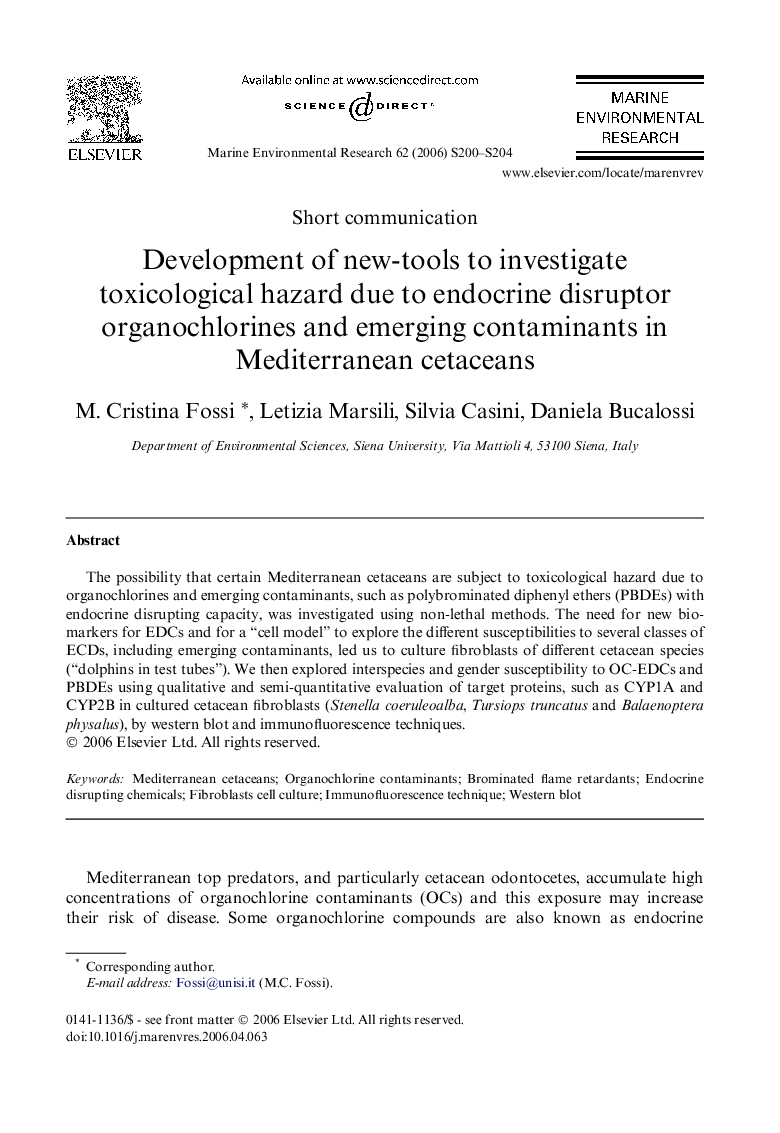| Article ID | Journal | Published Year | Pages | File Type |
|---|---|---|---|---|
| 4551746 | Marine Environmental Research | 2006 | 5 Pages |
The possibility that certain Mediterranean cetaceans are subject to toxicological hazard due to organochlorines and emerging contaminants, such as polybrominated diphenyl ethers (PBDEs) with endocrine disrupting capacity, was investigated using non-lethal methods. The need for new biomarkers for EDCs and for a “cell model” to explore the different susceptibilities to several classes of ECDs, including emerging contaminants, led us to culture fibroblasts of different cetacean species (“dolphins in test tubes”). We then explored interspecies and gender susceptibility to OC-EDCs and PBDEs using qualitative and semi-quantitative evaluation of target proteins, such as CYP1A and CYP2B in cultured cetacean fibroblasts (Stenella coeruleoalba, Tursiops truncatus and Balaenoptera physalus), by western blot and immunofluorescence techniques.
